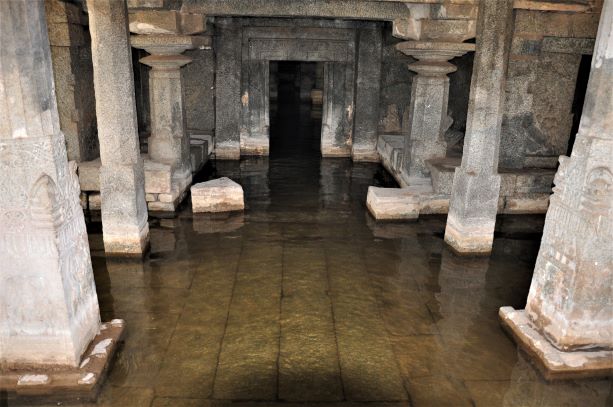The Prasanna Virupaksha temple (Underground Shiva Temple), Hampi, Karnataka, was built in 14th Century CE.
The roof of the temple is at the current ground level, while the main structure is below the ground level. The temple remained buried until 1980’s when it was discovered and excavated.
The Garbhgriha and Mantapas around remain in water throughout the year. When we visited there was almost a feet of water in the Maha Mantapa.
Location: https://goo.gl/maps/Li9cRLuJLtAjwaUDA
#drive #nature #heritage #hampi
About Hampi:
Hampi (Kishkinda), Karnataka is situated on the banks of river Tungabhadra 340 km north of Bengaluru.
With more than 1,600 monuments covering ~40 sq kms, Hampi is a World Heritage Site and World’s Largest Open-air Museum.
Hampi, referred to as Kishkinda in Ramayana, has ancient history traceable to thousands of years.
Most of the current day ruins were built by Vijayanagara kings during 1336 – 1565 CE.
Hampi at one time was most prosperous and considered to be the largest city in the World. As per the chronicles of European and Persian travellers, Hampi had dedicated trading markets for diamonds, pearls, silks, brocades, and had opulent palaces, marvelous temples, royal quarters, embassies for foreign emissaries, massive fortifications, large pools, baths, water management systems, aquaducts, pavilions, stables, riverside features, pillared halls, Mandapas, memorial structures, gateways and defence check posts.
Hampi – it’s a living museum!















